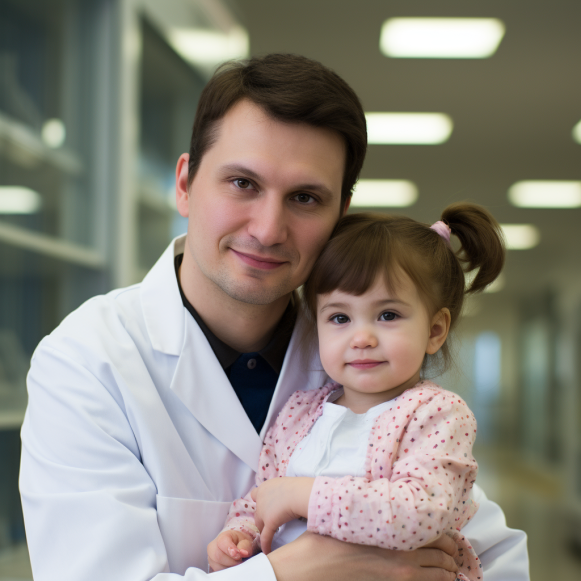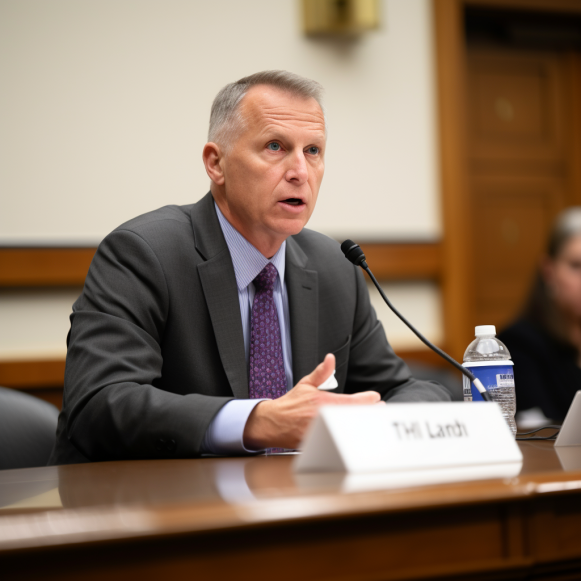Quick genetic test offers hope for sick, undiagnosed kids. But few insurers offer to pay

Layla Babayev was undergoing surgery for a bowel obstruction just 48 hours after her birth in a Seattle-area hospital in 2021.
She had another emergency surgery two weeks later and then developed meningitis. Layla was in neonatal intensive care for more than a month in three hospitals while doctors investigated the cause of her illness.
Her parents enrolled her in a clinical trial to rule out a genetic disorder. Unlike genetic tests that focus on a few disease-causing variants and can take months to produce results, the Seattle Children’s Hospital study would sequence Layla’s entire genome, looking for a wide range of abnormalities — and potentially provide answers in less than a week.
Layla was discovered to have a rare genetic disorder that caused gastrointestinal defects and weakened her immune system. According to her father, Dmitry Babayev, the findings prompted doctors to isolate her, administer weekly antibiotic infusions, and contact other hospitals that had treated patients with the same condition.
Babayev now believes that the test, known as rapid whole-genome sequencing, saved his daughter’s life. “It is why we believe Layla is still with us today,” he went on to say.
Layla’s experience, like her disorder, is unusual.
Few hospitalized babies with undiagnosed illnesses are subjected to whole-genome sequencing, a diagnostic tool that allows scientists to quickly identify genetic disorders and guide clinicians’ treatment decisions by analyzing a patient’s entire DNA makeup. This is largely due to the fact that many private and public health insurers will not cover the $4,000-to-$8,000 cost.
However, a coalition of genetic testing companies, drug companies, children’s hospitals, and doctors has lobbied states to expand Medicaid coverage — and their efforts have begun to bear fruit.
According to GeneDX, a provider of the test, eight state Medicaid programs have added or will soon add rapid whole-genome sequencing to their coverage since 2021. This includes Florida, where the Republican-controlled legislature has been staunchly opposed to Medicaid expansion under the Affordable Care Act.
According to the nonprofit Rady Children’s Institute for Genomic Medicine, another major provider of the test, the test is also being considered for coverage in Georgia, Massachusetts, New York, and North Carolina.
Coverage of the test by Medicaid can significantly increase access for infants; the state-federal program that insures low-income families covers more than 40% of children in their first year of life.
“This is an extraordinary, powerful test that can change the trajectory of these children’s diseases and our own understanding,” said Jill Maron, chief of pediatrics at Women & Infants Hospital in Providence, Rhode Island, who conducted research on the test.
“The only thing interfering with more widespread use is insurance payment,” she went on to say.
Proponents of whole-genome sequencing, which has been commercially available for about six years, claim it can save sick infants with potentially rare diseases months or years of testing and hospitalizations without a clear diagnosis — and increase survival.
They also cite research indicating that rapid whole-genome testing may reduce overall health costs by reducing unnecessary hospitalizations, testing, and care.
However, the test may have limitations. While it is better than older genetic tests at detecting rare disorders, whole-genome sequencing detects a mutation only about half of the time — either because the test misses something or because the patient does not have a genetic disorder at all.
Furthermore, the test raises ethical concerns because it can reveal that babies — as well as their parents — have genes that put them at a higher risk for adult-onset diseases such as breast and ovarian cancer.
Even so, some doctors believe that sequencing provides the best chance of making a diagnosis when more routine testing fails. Only about 10% of babies who could benefit from whole-genome sequencing are getting it, according to Pankaj Agrawal, chief of neonatology at the University of Miami Miller School of Medicine.
“It is super frustrating to have sick babies and with no explanation what is causing their symptoms,” he went on to say.
Some private insurers, such as UnitedHealthcare and Cigna, now cover the test with restrictions, but others do not.
Coverage varies even among states that have adopted the test. Later this year, Florida will add the benefit to Medicaid for patients under the age of 20 who are in hospital intensive care units.
Florida state Rep. Adam Anderson, a Republican, led the push for Medicaid to cover sequencing after his 4-year-old son died in 2019 after being diagnosed with Tay-Sachs disease, a rare genetic disorder. Andrew, his son, is the name of the new state Medicaid benefit.
Anderson admitted that persuading his Republican colleagues was difficult because they typically oppose any increase in Medicaid spending.
“As soon as they heard the term ‘Medicaid mandate,’ they shut down,” he told reporters. “As a state, we are fiscally conservative, and our Medicaid program is already a huge program as it is, and we want to see Medicaid smaller.”
Anderson said doctors took more than a year to diagnose his son, which was an emotionally difficult time for the family as Andrew underwent numerous tests and trips to specialists in different states.
“I know what it’s like to not get those answers as doctors try to figure out what is wrong, and without genetic testing it’s almost impossible,” he went on to say.
According to a Florida House analysis, if 5% of babies in the state’s neonatal intensive care units received the test each year, it would cost the Medicaid program about $3.3 million per year.
A 2020 study called Project Baby Manatee, in which Nicklaus Children’s Hospital in Miami sequenced the genomes of 50 patients, persuaded Florida’s legislative leaders. As a result, 20 patients — roughly 40% — were diagnosed, resulting in changes in care for 19 of them.
According to the final report, the estimated savings exceeded $3.7 million, representing a nearly $2.9 million return on investment after the cost of the tests.
“We have shown that we can justify this as a good investment,” said Parul Jayakar, director of the hospital’s Division of Clinical Genetics and Metabolism, who was involved in the study.





